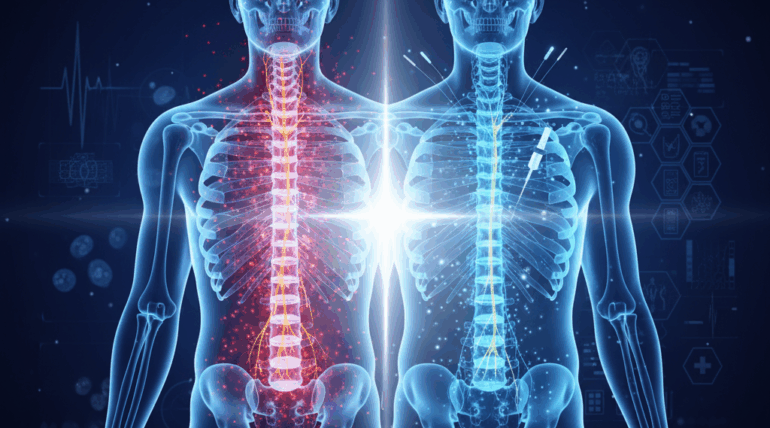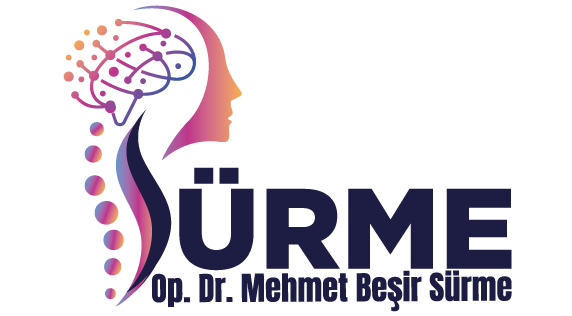
Regain Your Freedom of Movement
Back and neck pain are among the most common complaints of modern life, negatively affecting the quality of life for millions of people. These conditions, which arise from poor posture, inactivity, aging, or trauma, can become serious problems that limit daily life, going beyond a simple discomfort.
So, is it possible to get rid of these stubborn chronic pains? Absolutely. Today, Neurosurgery Specialists offer definitive and effective solutions for spinal disorders using both surgical and non-surgical (interventional) methods.
1. The Most Common Causes of Back and Neck Pain
The spine is the central pillar of our body and consists of many different structures. The main conditions that cause pain are as follows:
- Lumbar/Cervical Herniated Discs: The displacement of the discs between the vertebrae, causing pressure on the nerves.
- Spinal Stenosis (Narrowing of the Spinal Canal): Compression of the nerves due to narrowing of the spinal canal.
- Degenerative Disc Disease: Age-related wear and tear of disks.
- Spinal Slippage (Spondylolisthesis): The forward or backward displacement of a vertebra over the vertebra below it.
- Scoliosis and Kyphosis: Abnormal curvatures of the spine.
2. When Painkillers Are Not Enough: Interventional Pain Treatments
Not every spinal problem requires surgery. Especially in cases of chronic pain that do not require surgery, Interventional Pain Treatments It offers an important solution for patients. These minimally invasive (small interventions) methods directly target the source of the pain.
Application Examples:
- Epidural Steroid Injections: It quickly relieves pain by reducing inflammation and swelling around the nerve roots caused by herniation or canal narrowing.
- Radiofrequency Thermocoagulation (RF Ablation): It involves temporarily deactivating the nerves that carry pain signals by heating them. It is particularly effective for facet joint pain and chronic back pain.
- Nerve Blocks: For diagnostic and therapeutic purposes, the administration of medication to specific nerves causing pain.
These treatments are usually performed in the operating room, radiography (fluoroscopy) is performed with precise targeting, which increases reliability and success rates.
3. If Surgery is Unavoidable: Complex Spinal Surgery
In cases where there is progressive neurological loss (weakness, loss of sensation) that does not respond to interventional treatments or causes spinal instability Complex Spinal Surgery comes into operation.
Modern surgical techniques performed by neurosurgeons include the following:
- Fusion Surgery: Permanent fusion of two or more vertebrae to ensure spinal stability (slippage, advanced degeneration).
- Minimally Invasive Surgery (MIS): Hernia or narrow canal surgeries performed with smaller incisions, causing minimal damage to surrounding tissue. The patient's recovery process is much faster.
- Deformity Surgery: Correction of spinal curvatures such as scoliosis and kyphosis to improve the mechanical structure of the spine.
Remember: Today, spinal surgery can be performed with a high degree of safety thanks to advanced imaging systems and neuromonitoring (nerve monitoring) technologies.
Conclusion: Accurate Diagnosis and Personalized Treatment Are Essential
The key to success in treating back and neck pain is to correctly identify the source of the pain and determine the most appropriate treatment for the patient's condition. personalized treatment plan is to create.
If you have chronic pain, see a specialist in the field. Neurosurgeon Applying for a comprehensive evaluation, learning about surgical options, interventional treatments, and other innovative approaches is the most important step you can take on the path to regaining your freedom of movement.



